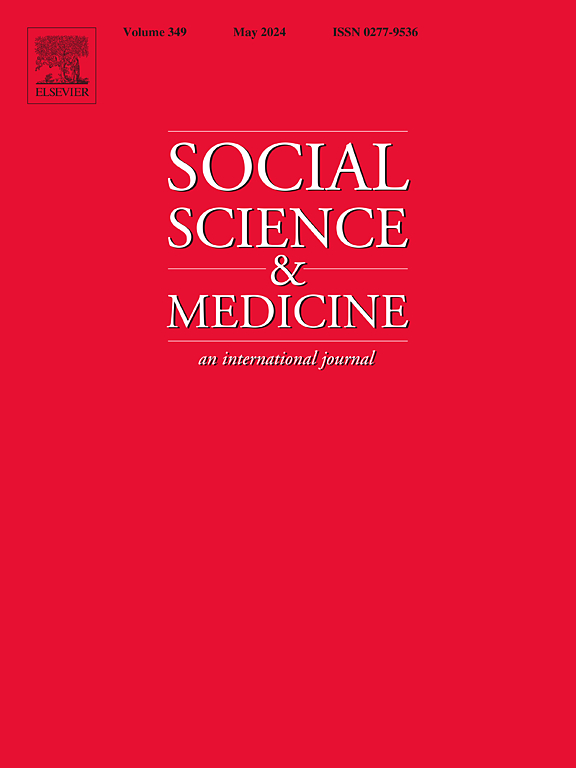Exploring the risks of fragmentation in health care markets – An analysis of inpatient care in Georgia
IF 4.9
2区 医学
Q1 PUBLIC, ENVIRONMENTAL & OCCUPATIONAL HEALTH
引用次数: 0
Abstract
Private providers play an important role in health systems in low-and middle-income countries. In many such contexts, markets are characterized by a high number of relatively small private facilities. The potential risks from highly concentrated healthcare markets are well-researched, and feature in the “Theories of Harm” investigated by competition regulators. However, there is limited evidence on markets that exhibit substantial harms as a result of very low concentration. This paper explores the risks associated with such market fragmentation, drawing on the example of Georgia, which has a largely privatized provider network.
We used a mixed-method study design to analyze the inpatient market in Georgia. Market structure was described using administrative data on bed capacity and discharge numbers and geo-location data on travel time between facilities. The implications of the market structure were explored through in-depth interviews (n = 35) with policymakers, healthcare managers, and local experts and an anonymous online survey of similar groups (n = 97).
Georgia's inpatient sector is characterized by a high number of small hospitals in terms of bed numbers and inpatient volumes, mitigated to a limited degree by the presence of provider networks. Travel time to the 3rd nearest competitor was extremely short, ranging from 3 to 5 min in big cities to 10 min in small towns and 33 min in remote locations. The fragmented nature of the market, together with inadequate regulatory and purchasing mechanisms, was argued to exacerbate challenges in the availability and competence of clinical staff, while the financial challenges caused by intense competition encouraged wasteful marketing, harmful cost-cutting measures, and demand inducement.
We present “Theories of Harm” from market fragmentation, and argue that an effective policy response requires market-shaping activities using regulatory, financing, and purchasing mechanisms to encourage appropriate levels of market consolidation and so enhance quality, efficiency, and effective governance.
探索医疗市场分散的风险--对格鲁吉亚住院病人护理的分析。
私营医疗机构在中低收入国家的医疗系统中发挥着重要作用。在许多此类情况下,市场的特点是有大量相对较小的私营设施。对高度集中的医疗保健市场的潜在风险已有充分研究,竞争监管机构调查的 "危害理论 "中也有相关内容。然而,有关市场因集中度极低而造成重大损害的证据却很有限。本文以格鲁吉亚为例,探讨了与这种市场分割相关的风险,格鲁吉亚的医疗服务提供商网络在很大程度上已经私有化。我们采用混合方法研究设计来分析佐治亚州的住院病人市场。我们使用病床容量和出院人数的行政数据以及设施间旅行时间的地理位置数据来描述市场结构。通过对政策制定者、医疗管理人员和当地专家的深入访谈(n = 35),以及对类似群体的匿名在线调查(n = 97),探讨了市场结构的影响。就床位数和住院病人数量而言,格鲁吉亚住院部门的特点是小型医院数量较多,而医疗服务提供者网络的存在则在一定程度上缓解了这一问题。距离最近的第三家竞争对手的旅行时间极短,大城市为 3 至 5 分钟,小城镇为 10 分钟,偏远地区为 33 分钟。市场的分散性,加上监管和采购机制的不完善,被认为加剧了临床人员的可用性和能力方面的挑战,而激烈竞争带来的财务挑战鼓励了浪费性营销、有害的成本削减措施和需求诱导。我们提出了市场分割的 "危害理论",并认为有效的政策应对措施需要利用监管、融资和采购机制开展市场塑造活动,以鼓励适当程度的市场整合,从而提高质量、效率和有效治理。
本文章由计算机程序翻译,如有差异,请以英文原文为准。
求助全文
约1分钟内获得全文
求助全文
来源期刊

Social Science & Medicine
PUBLIC, ENVIRONMENTAL & OCCUPATIONAL HEALTH-
CiteScore
9.10
自引率
5.60%
发文量
762
审稿时长
38 days
期刊介绍:
Social Science & Medicine provides an international and interdisciplinary forum for the dissemination of social science research on health. We publish original research articles (both empirical and theoretical), reviews, position papers and commentaries on health issues, to inform current research, policy and practice in all areas of common interest to social scientists, health practitioners, and policy makers. The journal publishes material relevant to any aspect of health from a wide range of social science disciplines (anthropology, economics, epidemiology, geography, policy, psychology, and sociology), and material relevant to the social sciences from any of the professions concerned with physical and mental health, health care, clinical practice, and health policy and organization. We encourage material which is of general interest to an international readership.
 求助内容:
求助内容: 应助结果提醒方式:
应助结果提醒方式:


